- News
- Reviews
- Bikes
- Accessories
- Accessories - misc
- Computer mounts
- Bags
- Bar ends
- Bike bags & cases
- Bottle cages
- Bottles
- Cameras
- Car racks
- Child seats
- Computers
- Glasses
- GPS units
- Helmets
- Lights - front
- Lights - rear
- Lights - sets
- Locks
- Mirrors
- Mudguards
- Racks
- Pumps & CO2 inflators
- Puncture kits
- Reflectives
- Smart watches
- Stands and racks
- Trailers
- Clothing
- Components
- Bar tape & grips
- Bottom brackets
- Brake & gear cables
- Brake & STI levers
- Brake pads & spares
- Brakes
- Cassettes & freewheels
- Chains
- Chainsets & chainrings
- Derailleurs - front
- Derailleurs - rear
- Forks
- Gear levers & shifters
- Groupsets
- Handlebars & extensions
- Headsets
- Hubs
- Inner tubes
- Pedals
- Quick releases & skewers
- Saddles
- Seatposts
- Stems
- Wheels
- Tyres
- Health, fitness and nutrition
- Tools and workshop
- Miscellaneous
- Cross country mountain bikes
- Tubeless valves
- Buyers Guides
- Features
- Forum
- Recommends
- Podcast
review
£9,199.00
VERDICT:
Fast, comfortable, sweet-handling road bike with the benefit of smooth power assistance
Smooth assistance from the motor
Decent range
Excellent handling
Top end components
Rear wheel can be a faff to remove
Weight:
12,810g
Contact:

This product has been selected to feature in road.cc recommends. That means it's not just scored well, but we think it stands out as special. Go to road.cc recommends
At road.cc every product is thoroughly tested for as long as it takes to get a proper insight into how well it works. Our reviewers are experienced cyclists that we trust to be objective. While we strive to ensure that opinions expressed are backed up by facts, reviews are by their nature an informed opinion, not a definitive verdict. We don't intentionally try to break anything (except locks) but we do try to look for weak points in any design. The overall score is not just an average of the other scores: it reflects both a product's function and value – with value determined by how a product compares with items of similar spec, quality, and price.
What the road.cc scores meanGood scores are more common than bad, because fortunately good products are more common than bad.
- Exceptional
- Excellent
- Very Good
- Good
- Quite good
- Average
- Not so good
- Poor
- Bad
- Appalling
The Addict eRide Premium takes the design of Scott's flagship race bike and adds a dollop of electrical assistance, creating a bike that is just as much fun to ride uphill as it is down. It still rides very much like a performance road bike though, and with all the cables and batteries hidden, your buddies will barely notice it's an ebike. Well, until you start to pull away on the hills.
I've ridden a handful of e-bikes over the last couple of years, but this is the first time I've actually lived with one for a decent amount of time. One thing is for sure – road e-bikes are a lot of fun. Plus they definitely aren't cheating.
Like many brands, Scott has chosen Mahle's ebikemotion X35 hub-based motor system, and it delivers the power in a very smooth, progressive manner. As you pull away there is no massive surge of assistance – it's more like having a strong tailwind nudging you along.
> Find your nearest dealer here
It's the same on the climbs. You don't really notice the motor kick in or out, so it just feels like riding the normal Scott Addict with the additional weight being cancelled out by the motor's assistance.
It's tempting to rely on the motor and not use the gears, but ride this like a traditional road bike and you barely know you're on an e-bike.
For starters, if you're a relatively strong rider you are going to be above the 25kph (15.5mph) cut-off for the majority of your ride anyway, unless you're spending the day in the mountains.
Even with the motor whirring away it's not going to turn you into some sort of climbing god. You'll be quicker for a given effort, but you've still got to work hard. I certainly wasn't ticking off any Strava KOMs on the local hills.
In fact, I'd get home having hit the same sort of heart rate figures I normally do, although my average speed would be higher by 1 to 2 mph (depending on the route). So I was still getting the same sort of workout levels.
The frame
Leaving the electronics alone for a second, I have to say this bike is a great ride anyway, thanks to pretty much exactly the same handling and performance traits as the Addict RC 30 I reviewed back in 2020.
The geometry is reasonably aggressive, with this large 56cm model having a 73° head angle paired with a 165mm long head tube and a 560mm top tube.
The seat angle is 73.5°, which puts you in a more forward position for getting the power down, while those other numbers give you a fast and direct handling machine.
With the added weight of the motor and battery, the eRide actually feels really planted on the descents, which gives added confidence when tackling technical sections or stretches where the surface quality is a bit on the dicey side.
With plenty of feedback it's easy to know what the tyres are up to, and banking hard into bends the fork's stiffness allows no understeer or feelings of vagueness.
It's the same on the flat, too. The aero design cues of the frameset and the deep section wheels allow you to maintain speed, and a 30-mile ride on the Addict without turning the power on highlighted just how eager this thing is to get a shift on. It's only the extra power needed from a standing start that makes a difference.
When it comes to climbing, you have two options. Stay sat in the saddle, keep the pedals lightly spinning and make full use of the motor; or, just like you would on your normal bike, stand up and mash those pedals taking whatever bonus assistance you can get.
Either way, the stiffness of the lower half of the frame and the fork won't see you wasting any power. The Addict feels very taut indeed.
What's it for?
For the first week or so of testing, my riding time was pretty limited to around an hour and a half a day, so I couldn't really exploit the motor assistance of the Scott. I was struggling to work out whether it was something that would really benefit my riding and training or not.
After all, I was mostly only using the motor on the climbs, so instead I could buy a non-e Addict and save over 4kg (including the bottle range-booster battery) and climb the hills quicker.
But when the rides started getting longer, and the big, back-to-back days kicked off, I really found the e-bike came into its own. This was highlighted on one of my favourite testing routes, a fairly lumpy loop that covers around 50 miles. There is a bit of everything in it, including a hill that comes about 15 miles from home that's a bit of a pig.
Hill help
It's about a mile long with an elevation gain of over 350ft, and a maximum gradient of 21.1%, although that does constantly change giving an average of 9%. My average heart rate while climbing it was a mere 104bpm!
In fact, looking back through the whole ride I can see a massive reduction in my average heart rate on the climbs where I'd used the motor on full power. The terrain is rolling, and my average heart rate was hanging around the 145-150bpm mark.
I was in the early stages of finding out how much range the battery gave, and only using the internal one – not the range booster battery you can see in the cage – so up until the midway point I had left the Scott in the lowest of the three power settings.
From the midway point to the top of the above climb is eight miles, with a lot of long, draggy climbs. It was also bloody freezing and the snow had turned up two hours early, so I was using everything the motor could give me on these hills, but still working hard enough to keep warm. My average heart rate for that section was 99bpm.
After that climb it's mostly flat with just a few power climbs, so even though assistance was on, my speed was consistently above the 25kph limit for the motor – which saw my average heart rate back up to around 145bpm.
> How to get the most from your limited training time
For a cold, wet winter day my average speed overall was pretty much what I'd normally achieve in the summer (I've ridden this route hundreds of times over the years), but when I arrived home, I could feel it much less in the legs – although I still felt like I'd had a good workout.
If it wasn't for the weather, I might even have enjoyed it!
Jumping on the bike over the following days also saw far fewer aches and less tiredness in my muscles. In short then, if you like your long, challenging routes, but still want a great workout, then an e-bike for the road is an excellent choice.
Motor specs
We've seen many new performance road and gravel e-bikes from Ribble, Merida, Orbea and more using the ebikemotion X35 system, and for good reason.
While it's not the most powerful out there it's a slimline unit and discreet, allowing a road bike to look like, well, a road bike. It only adds about 3.5kg in weight too.
The 36V, 250Wh Panasonic battery lives permanently inside the down tube and is recharged via the port on the seat tube. This port also accepts booster batteries to increase range as you see in the photos; the 208Wh booster comes as standard on this Premium model (our overall weight up top includes the booster, which weighs 1.6kg; Scott claims a medium size eRide Premium weighs 10.75kg without the booster).
If you have any issues with the system, this port is also a diagnostics point.
The batteries power the Hub Drive M1 motor which dishes out 40Nm of torque once a sensor detects the pedals are rotating. As I mentioned earlier, it kicks in very smoothly indeed, and it's the same when you hit the speed limit and it switches off.
The only time it can feel a little lumpy is when you are right on that speed limit and it's not sure whether to keep going or not. That happens rarely, though.
Also, if you're riding in traffic and keep alternating between pedalling and freewheeling at low speed, you sometimes get a little nudge from the motor after you've stopped pedalling. It'll only scare you the first time though...
With the system turned off there is very little noticeable friction, and on the days I was not using the motor or was on a flatter ride, the smooth pedalling and everything else felt just like on a normal road bike.
There are three power levels, which you can toggle through via the iWoc One controller on the top tube. A single press will see the control light up white to show it's on.
Press once for Eco (green), again for Mid Power (orange) and once more for Full Power (red). The same LED shows battery life passing through the same colours as it drains.
It's easy to use while riding and intuitive enough. There is also an app you can pair up to see exact percentages for battery life and so on; it's not the smoothest app in the world, but it does at least give you a heads up on what is going on. The system is ANT+ compatible, so you can pair it to a bike computer too.
Scott claims a range of 120km (74.5 miles) and 2,200m (7,220ft) of ascent when using both batteries. Mahle says it the limit is 75km (46 miles) for just the internal battery. Obviously though, there are so many parameters that'll affect that.
The ride I described earlier was 51.1 miles (82km) with 2,886ft (880m) of climbing, and flicking around the levels of assistance saw me return home with 45% of the single internal battery left.
> 18 of the best 2021 electric road bikes — get powered aid on the sly
It's hard to determine, but I'd say you are going to get a decent day ride in using either the single or both batteries. Charging time from empty is just over 4hrs for both batteries.
Frame and fork
To cope with the added stresses and strains of the motor assistance, Scott has added further layers of carbon fibre to certain junctions of the frame.
To improve structural stability, the bottom bracket area (including the chainstays) get more material than the standard Addict RC as well, as does the head tube where it meets with the top and down tubes, and the places where the top tube and seatstays meet the seat tube.
Scott says this still only gives a frameset weight of just over a kilo.
Like many performance frames, the eRide focuses on larger tube sections for the lower half of the frame – such as the down tube and chainstays – for increased power transfer, while going slender for the seat tube and seatstays for a bit of flex and comfort.
Up front, the head tube is tapered from 1.25in to 1.5in to cope with steering and heavy braking loads.
Overall, the build quality looks and feels very high, and I'm a big fan of the flip paintjob that changes colour depending on the light levels. The one thing I would say, though, is that the cutout around the top tube control button doesn't have the smoothest of edges.
What also helps the aesthetics is Scott's latest cable routing. Like many bikes for 2021 the cables, hoses and wires run internally through the integrated handlebar/stem combo, before entering the frame at the top of the head tube. With this eRide Premium using an electronic groupset, there is very little going on outside of the frame.
The only thing that can be a bit of a faff is if you need to remove the rear wheel. The rear hub is attached to the frame via nuts threaded onto the spindle, so for starters you need to carry a 17mm spanner instead of just a hex key.
The wire along the chainstay that delivers power to the motor has a connector to separate it from the hub, but if you have a puncture you have to tease the connector out through the hole to detach it.
> Should you get tubeless tyres? Are they your best option?
Once you've had a play and know what you're doing it's not a major issue, but it's much more of a hassle than just whipping the rear wheel out on a standard bike – especially in the rain or dark.
Sizing
The eRide is available in five sizes, ranging from an effective top tube length of 515mm to 575mm. As I touched on earlier, the geometry is a balance of endurance with a racy edge to it.
The seat and head angles are relatively steep, and the head tube height still allows a decent drop to the handlebar if you whip the spacers out. Stack on this large model is 593.3mm while the reach is 384.3mm giving a ratio of 1.55.
The wheelbase is relatively long at 1007.5mm, brought on mostly by the 422mm chainstays. This does add plenty of stability to the ride, though. If you want to get more details, there is a full geometry chart on Scott's website for all sizes.
Finishing kit
The Premium model here sits at the top of the eRide tree and is suitably decked out with shiny bling.
With its Dura-Ace (DA) Di2 groupset, the Addict is an absolute joy to ride. DA Di2 offers excellent gear shifts wherever the chain is on the cassette or chainset (don't just take my word for it, check out Mat's review of the rim brake setup) and the speed and precision makes it one of the best groupsets out there. Cog-wise, Scott specs an 11-30t cassette paired to a 50x34t chainset.
DA doesn't let you down when it comes to the braking, either. With 160mm rotors front and rear, the DA calipers deliver huge amounts of stopping power and you can feel everything through the levers; modulation is easy, as is keeping lock-ups to a minimum.
Syncros is Scott's in-house component brand, and the eRide uses the Creston iC SL Carbon integrated stem and handlebar. Its fully internal cable routing gives a very clean look, but it's also very comfortable.
The flat section gives you a good place to rest your hands on long climbs, and the shallow curve of the drops allows plenty of positions. Stiffness is high too, for when you want to accelerate hard out of the saddle.
The Duncan SL Aero seatpost offers a bit of flex for comfort and is held in place by Scott's effective yet subtle clamping system.
Syncros also supplies the saddle with its Belcarra Regular 1.0. It's a nice place to spend plenty of miles, and I found the minimalist padding very comfortable. I'd prefer it in black though, from an aesthetics point of view.
Wheels and tyres
The eRide Premium uses Syncros' Capital 1.0 40e Disc wheelset, with deep-section carbon rims on a 24-spoke build up front with 32 spokes for the rear. It's a good quality set of wheels and certainly stood up well to everything I threw at it.
There is plenty of stiffness, and no noticeable resistance at the hub when it's unpowered. The hubs saw some really crappy weather too, without any ill effects.
These hoops wear Schwalbe Pro One Microskins in a 30mm width. They're good tyres with oodles of grip and very little rolling resistance. I find Schwalbe tyres can be a little fragile at times, but had no issues here even in the winter months. They offer a plush ride feel which balances nicely with the Scott's frame.
Value
There are four models in the eRide range, with the Premium coming in at a cool £9,199 on Scott's UK website. Okay, that's a lot of money, but compared to the non-ebike version – the Addict RC Pro with much the same finishing kit and the same cool paintjob – it's not as extreme as you'd think. The RC Pro is roughly a grand less at £8,149.
If it's a top-end e-road bike you're after, Specialized has the S-Works Turbo Creo SL for £10,999, although the range starts at £5,499. Scott's range begins at £4,399 for the eRide 20.
The Specialized uses a mid-motor built into the frame rather than a hub-based system, but looks to offer similar outputs. With the piggy-back battery fitted it's about a kilo heavier than the Scott, though.
Our sister site ebiketips was very impressed with the Ribble Endurance SL2 Di2 when they reviewed it a couple of years back.
It uses the same system as the Scott and, while they tested the Ultegra Di2 option at £4,499, Ribble's Bikebuilder can create a very similar build to the eRide Premium (DA Di2, carbon wheels, integrated carbon cockpit and so on) for £7,053.
Conclusion
First up, living with an e-bike over a couple of months was a lot of fun, and I think they really do have a place in the performance road market – especially if you're a rider who, like me, finds climbing a necessary evil to get to the next great descent.
As for the Addict eRide, it's a high-performance beast that integrates motorised assistance really well, to the point you never really feel the transition between e-bike and er, just bike. The handling, ride position and comfort levels are top notch and, while it's an expensive bike, it's fairly priced both for what it is and against the top-end opposition.
Verdict
Fast, comfortable, sweet-handling road bike with the benefit of smooth power assistance
road.cc test report
Make and model: Scott Addict eRide Premium
Size tested: L/56
About the bike
List the components used to build up the bike.
DRIVE UNIT: Mahle Motor Hub drive 40Nm max Torque / EU: 25kmh / US: 20mph
BATTERY: Mahle 36V-208Wh + xTra Power Bottle Cage Battery 36v-250W
DISPLAY: Mahle iWoc, Bluetooth / Dedicated Smartphone app
CHARGER: Mahle 100-240V-2A
REAR DERAILLEUR: Shimano Dura-Ace Di2 RD-R9150 22 Speed
FRONT DERAILLEUR: Shimano Dura-Ace Di2 FD-R9150
SHIFTERS: Shimano Dura-Ace ST-R9170, 22 Speed Electronic Shift System
CRANKSET: Shimano Dura-Ace FC-R9100, Hollowtech II 50x34 T
BB-SET: Shimano SM-BB92-41B
CHAIN: Shimano Dura-Ace CN-HG901-11
CASSETTE: Shimano Dura Ace CS-R9100, 11-30
BRAKES: Shimano BR-R9170 Hyd.Disc
ROTOR: 160/F SM-RT900 CL and 160/R SM-RT86 6B rotor
HANDLEBAR: Syncros Creston iC SL Carbon combo
SEATPOST: Syncros Duncan SL Aero
SEAT: Syncros Belcarra Regular 1.0
HEADSET: Syncros Addict RC Integrated
WHEELSET: Syncros Capital 1.0 40e Disc, 24 Front /32 Rear, Syncros Fr thru-axle Re Bolt on
FRONT TYRE: Schwalbe PRO ONE Microskin, TL-Easy, Fold 700x30C
REAR TYRE: Schwalbe PRO ONE Microskin, TL-Easy, Fold 700x30C
MAX. SYSTEM WEIGHT:120 kg
The overall weight includes the bike
the rider
the equipment
and possible additional luggage.
Tell us what the bike is for and who it's aimed at. What do the manufacturers say about it? How does that compare to your own feelings about the bike?
Scott says, "If we decided to make an Addict eRIDE it wasn't to make things easier. No, we wanted to make things tougher. To make climbs higher, longer, steeper. To get you out of the house earlier, and back home later. Light, performant, and just as capable at its World Tour sibling, the Addict eRIDE is a revelation for the way we look at cycling."
I agree. The eRide doesn't necessarily make things massively easier – in fact you ride just as hard, but faster on the climbs.
Where does this model sit in the range? Tell us briefly about the cheaper options and the more expensive options
This Premium model sits at the top of the range. The eRide 10 uses Ultegra Di2 (and lacks the extra battery) and is £6,199. There is also an eRide 20 which uses a mixture of Ultegra and 105, plus alloy wheels. It'll set you back £4,399.
Scott also makes a women specific Contessa eRide 10 model, which is built around the same finishing kit as the men's version for the same price.
Frame and fork
Overall rating for frame and fork
8/10
Tell us about the build quality and finish of the frame and fork?
On the whole it's very good, although the cutout around the power button is a little on the rough side.
Tell us about the materials used in the frame and fork?
Both the frame and fork use carbon fibre.
FRAME: Addict eRIDE Disc HMX
Endurance geometry / Replaceable Derailleur Hanger
Fully Internal cable routing
FORK: Addict eRIDE HMX Flatmount Disc
1 1/4"-1 1/2" Eccentric Carbon steerer
Tell us about the geometry of the frame and fork?
The geometry is endurance-based, while maintaining a performance edge to it. Full details can be found on Scott's website.
How was the bike in terms of height and reach? How did it compare to other bikes of the same stated size?
I mention the stack and reach figures in the main review, and I'd say they are very typical for an endurance bike of this size.
Riding the bike
Was the bike comfortable to ride? Tell us how you felt about the ride quality.
The Scott delivers a comfortable yet firm ride thanks to the quality of the frame and fork.
Did the bike feel stiff in the right places? Did any part of the bike feel too stiff or too flexible?
Stiffness levels are exactly where they need to be for hard efforts out of the saddle.
How did the bike transfer power? Did it feel efficient?
Power transfer feels efficient, backed up by the motor on tough climbs.
Was there any toe-clip overlap with the front wheel? If so was it a problem?
No.
How would you describe the steering? Was it lively neutral or unresponsive? The lively side of neutral.
Tell us some more about the handling. How did the bike feel overall? Did it do particular things well or badly?
The handling is quick and positive without entering the realms of twitchiness.
Which components had the most effect (good or bad) on the bike's comfort? would you recommend any changes?
I got on well with the Syncros saddle, and the carbon cockpit offers decent comfort.
Which components had the most effect (good or bad) on the bike's stiffness? would you recommend any changes?
The Dura-Ace cranks are some of the stiffest out there. The handlebar resists flex from sprinting well too.
Which components had the most effect (good or bad) on the bike's efficiency? would you recommend any changes?
The motor obviously helps here, and it delivers power very smoothly.
Rate the bike for efficiency of power transfer:
8/10
Rate the bike for acceleration:
8/10
Rate the bike for sprinting:
8/10
Rate the bike for high speed stability:
8/10
Rate the bike for cruising speed stability:
8/10
Rate the bike for low speed stability:
8/10
Rate the bike for flat cornering:
8/10
Rate the bike for cornering on descents:
8/10
Rate the bike for climbing:
8/10
The drivetrain
Rate the drivetrain for performance:
9/10
Rate the drivetrain for durability:
8/10
Rate the drivetrain for weight:
7/10
Rate the drivetrain for value:
6/10
Tell us some more about the drivetrain. Anything you particularly did or didn't like? Any components which didn't work well together?
The Dura-Ace groupset is nothing short of exceptional, and I was impressed with how well the X35 motor system works.
Wheels and tyres
Rate the wheels for performance:
8/10
Rate the wheels for durability:
8/10
Rate the wheels for weight:
7/10
Rate the wheels for comfort:
8/10
Rate the wheels for value:
6/10
Tell us some more about the wheels.Did they work well in the conditions you encountered? Would you change the wheels? If so what for?
Decent quality wheels with a bit of aero performance.
Rate the tyres for performance:
8/10
Rate the tyres for durability:
7/10
Rate the tyres for weight:
8/10
Rate the tyres for comfort:
8/10
Rate the tyres for value:
6/10
Tell us some more about the tyres. Did they work well in the conditions you encountered? Would you change the tyres? If so what for?
Grippy tyres with a low rolling resistance. They stand up well to winter conditions too.
Controls
Rate the controls for performance:
8/10
Rate the controls for durability:
8/10
Rate the controls for weight:
7/10
Rate the controls for comfort:
8/10
Rate the controls for value:
6/10
Tell us some more about the controls. Any particularly good or bad components? How would the controls work for larger or smaller riders?
The handlebar/stem combo works well for me, and the saddle offers a supportive ride without being too plush.
Your summary
Did you enjoy riding the bike? Yes
Would you consider buying the bike? Yes
Would you recommend the bike to a friend? Yes
How does the price compare to that of similar bikes in the market, including ones recently tested on road.cc?
It's decently priced against top-end models from the likes of Specialized, and while the Ribble (see review) is a decent chunk cheaper, it's not by as much as I would have expected.
Rate the bike overall for performance:
8/10
Rate the bike overall for value:
5/10
Use this box to explain your overall score
The eRide Premium is based on the excellent Addict RC frameset, which offers a great ride, and offers an efficient and smooth hub motor. It's a top level build with very little to quibble over.
About the tester
Age: 42
I usually ride: This month's test bike My best bike is: B'Twin Ultra CF draped in the latest bling test components
I've been riding for: Over 20 years I ride: Every day I would class myself as: Expert
I regularly do the following types of riding: time trialling, commuting, club rides, sportives, fixed/singlespeed,
Since writing his first bike review for road.cc back in early 2009 senior product reviewer Stu has tested more than a thousand pieces of kit, and hundreds of bikes.
With an HND in mechanical engineering and previous roles as a CNC programmer/machinist, draughtsman and development engineer (working in new product design) Stu understands what it takes to bring a product to market. A mix of that knowledge combined with his love of road and gravel cycling puts him in the ideal position to put the latest kit through its paces.
He first made the switch to road cycling in 1999, primarily for fitness, but it didn’t take long for his competitive side to take over which led to around ten years as a time triallist and some pretty decent results. These days though riding is more about escapism, keeping the weight off and just enjoying the fact that he gets to ride the latest technology as part of his day job.
Latest Comments
- Jogle 43 min 38 sec ago
It's strange how she thought that she needed a licence, then she got disqualified and realised that she was a Freeman of the Land or something like...
- chrisonabike 57 min 52 sec ago
Hoorah for the "little person"! Formerly the elite did what they liked and the law followed. Now we have a wider franchise - anyone with a motor...
- David9694 2 hours 5 min ago
Minehead Town Council warns toilet block to be closed again for safety issue work...
- Barraob1 2 hours 11 min ago
Very typical sentence from an Irish judge. Was driving behind a car tonight and the driver was watching vids on their phone which was mounted on...
- Secret_squirrel 2 hours 48 min ago
I have. Put him in hospital....
- quiff 3 hours 35 min ago
Fair point, I forgot where this started. My suggestion that untaxed cars you see are unmarked police cars was tongue in cheek; clearly they're not....
- espressodan 4 hours 11 min ago
Lawyers for people who murder cyclists don't offer defences, they over flimsy excuses which courts and juries are happy to accept because everybody...
- djm778 4 hours 35 min ago
There's a growing market of super compact chain sets/cassette combos out there now. More folk are realising there's a lot of 'aspirational' gears...
- jesse58579 6 hours 17 min ago
I owned a Shimano DuraAce crank set FC-7950. The crankshaft snapped while I was biking about 20mph on a gravel road. I had video of my crash with...
- Pedal those squares 8 hours 2 min ago
Thanks for the reminder. Must, book a trip to the bike shop for "ANOTHER" inspection. By the time they check it every year, it would have been...















































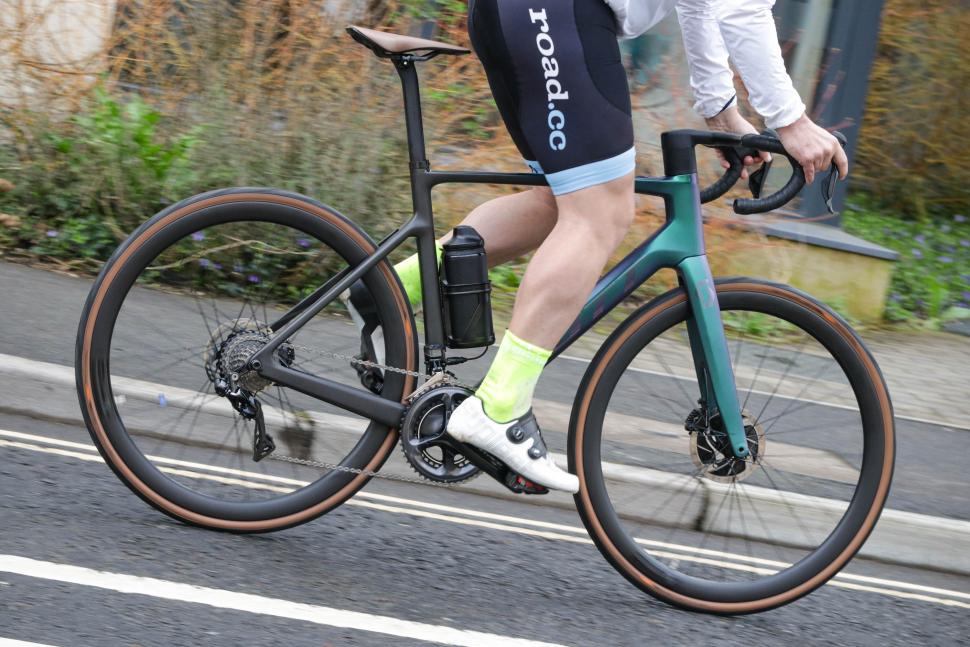

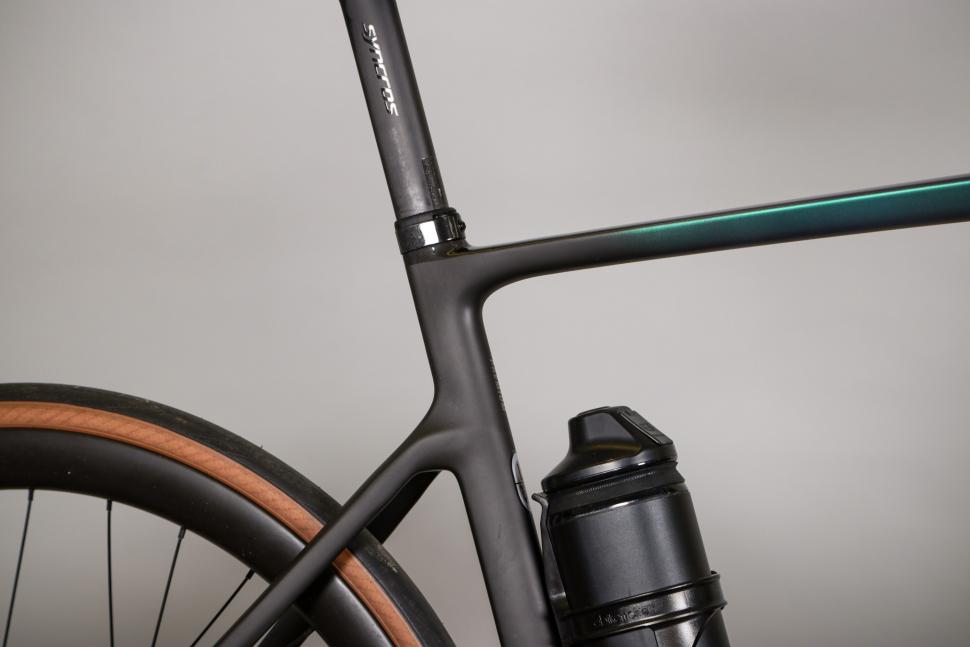
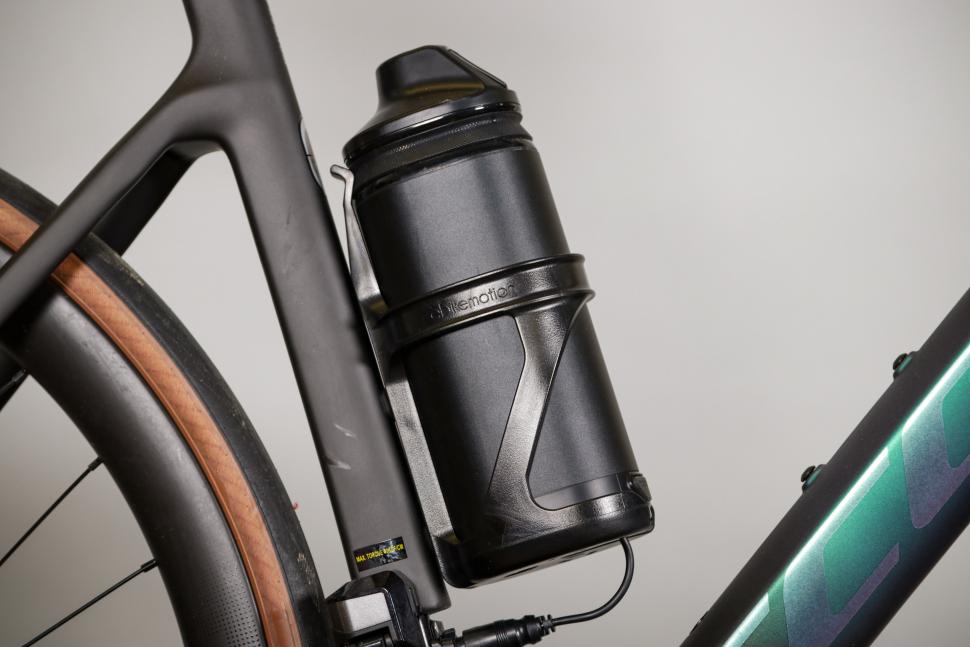
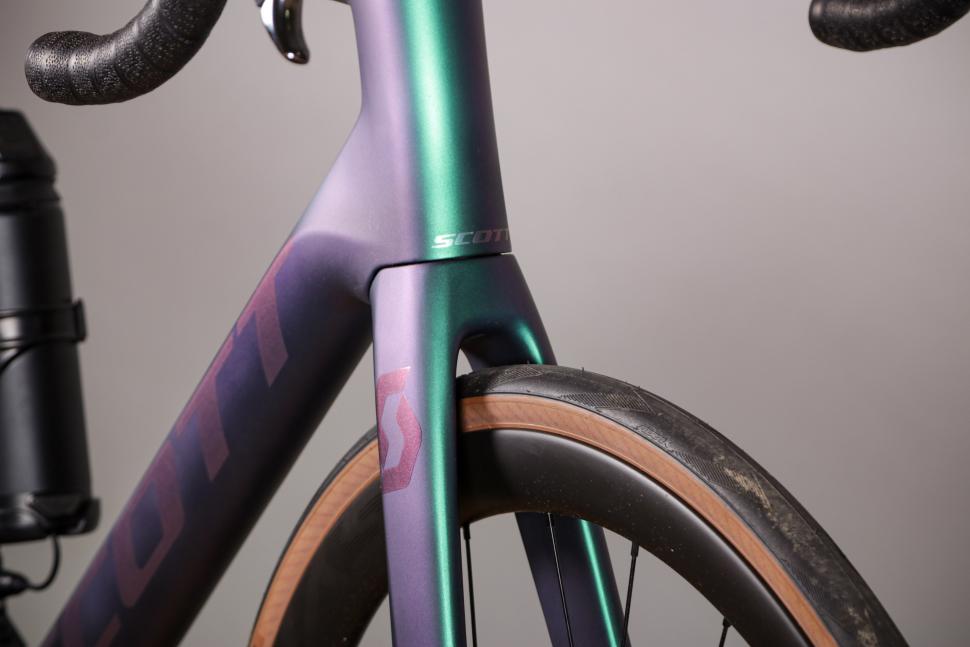



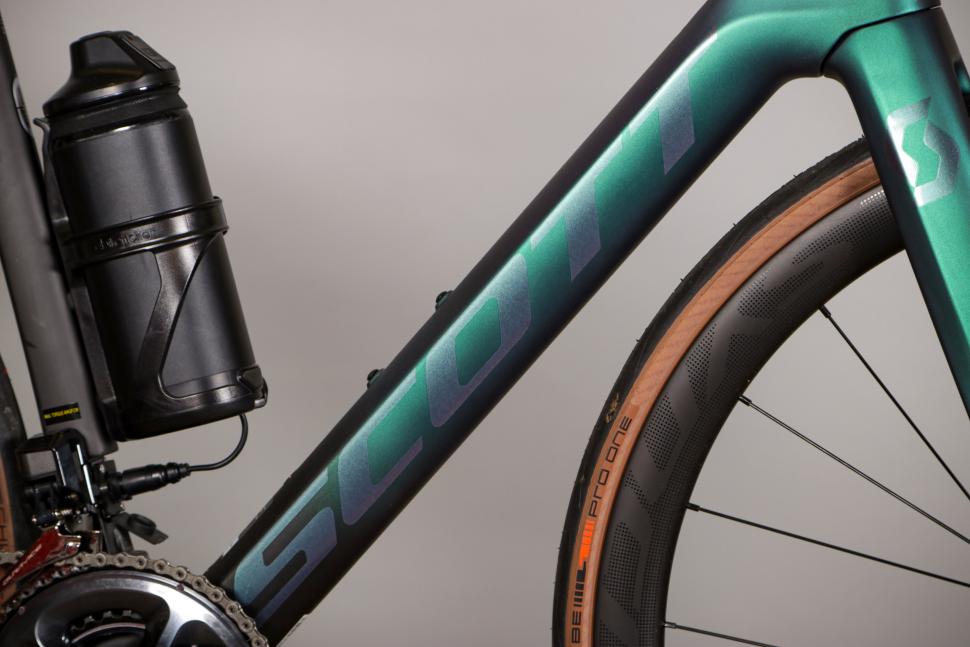
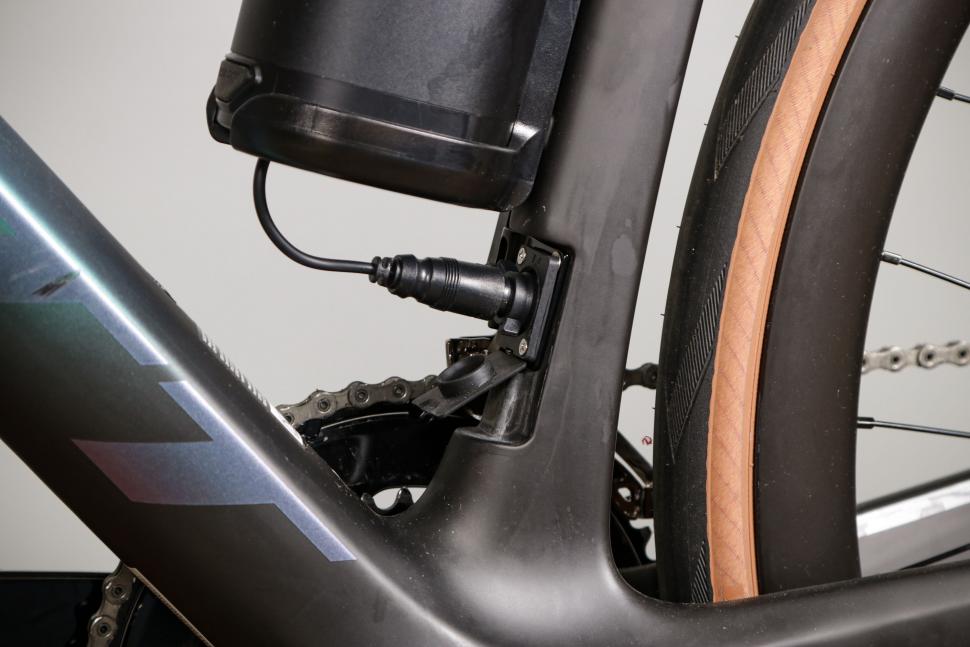

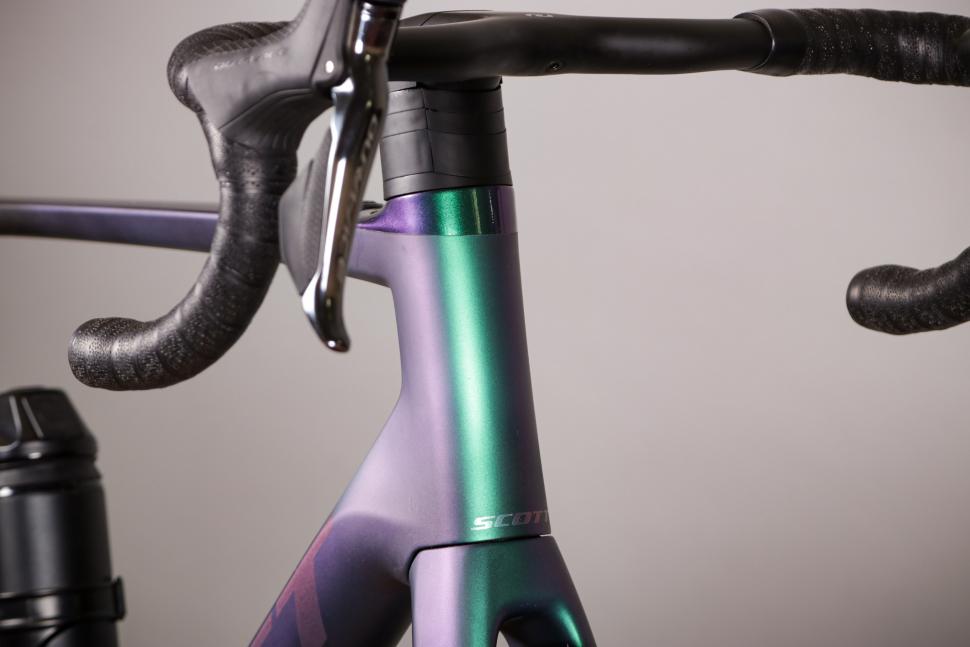
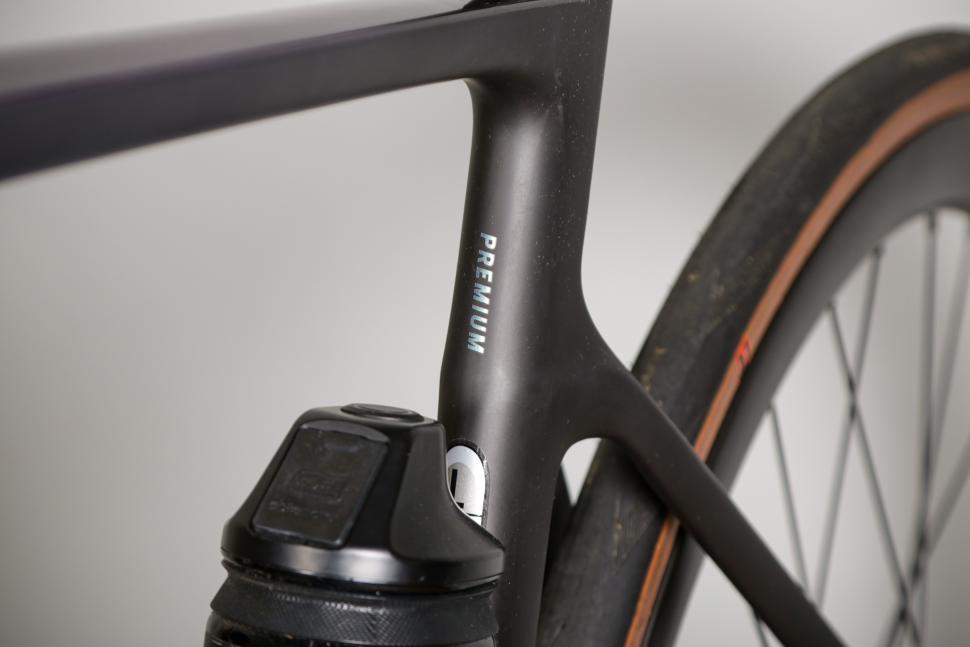
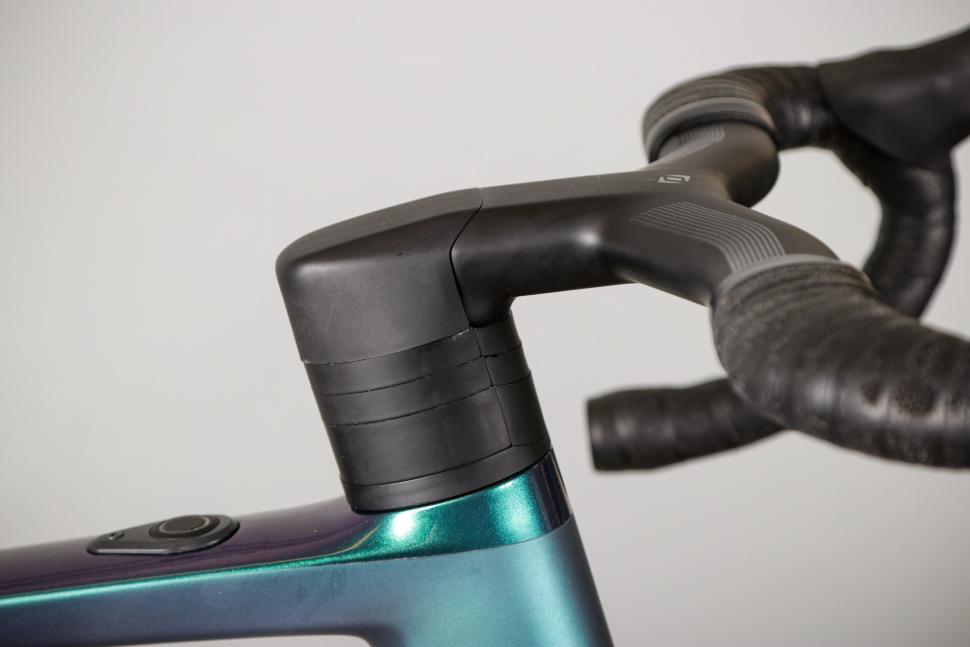
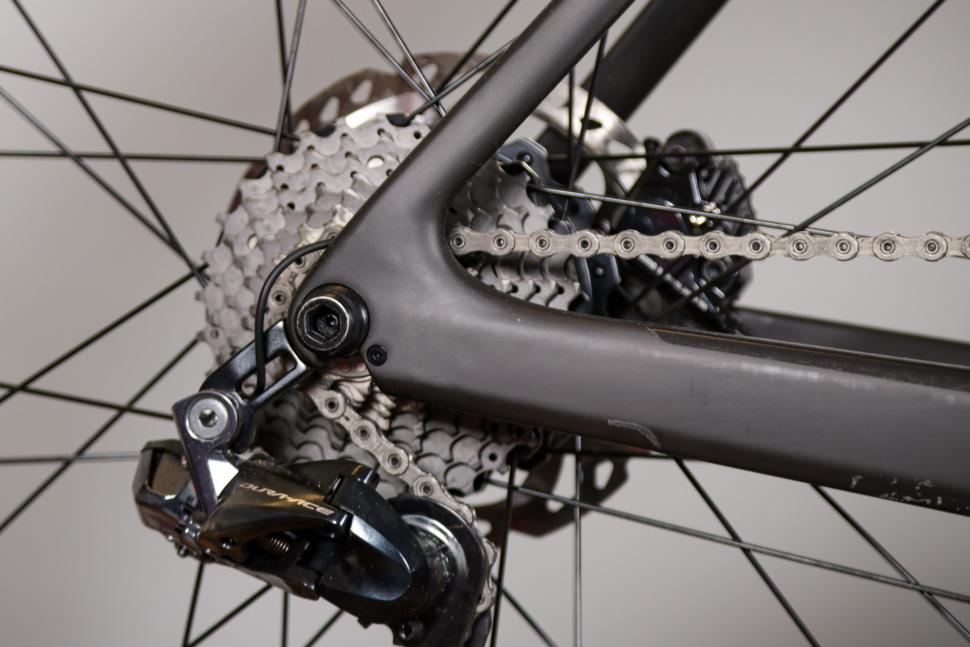




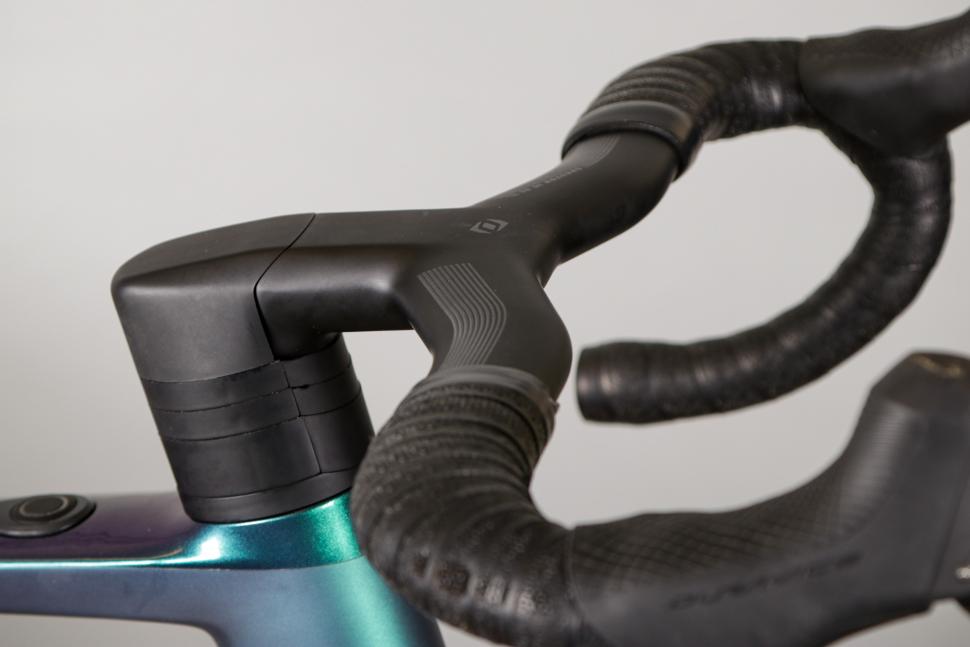




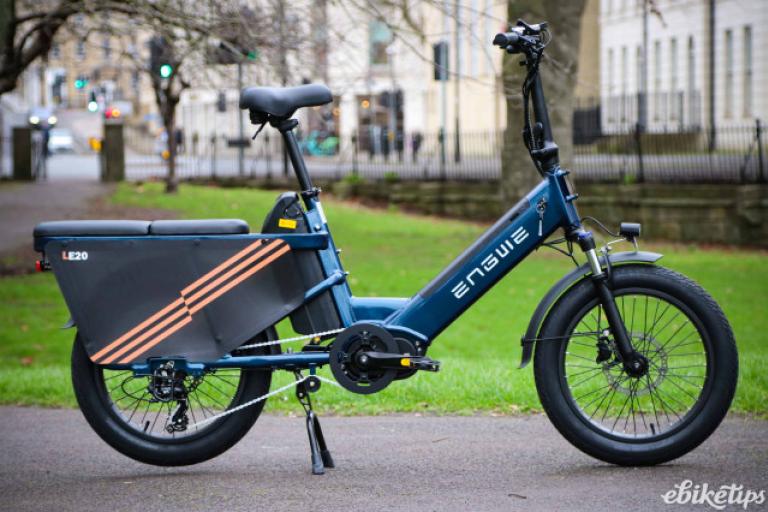

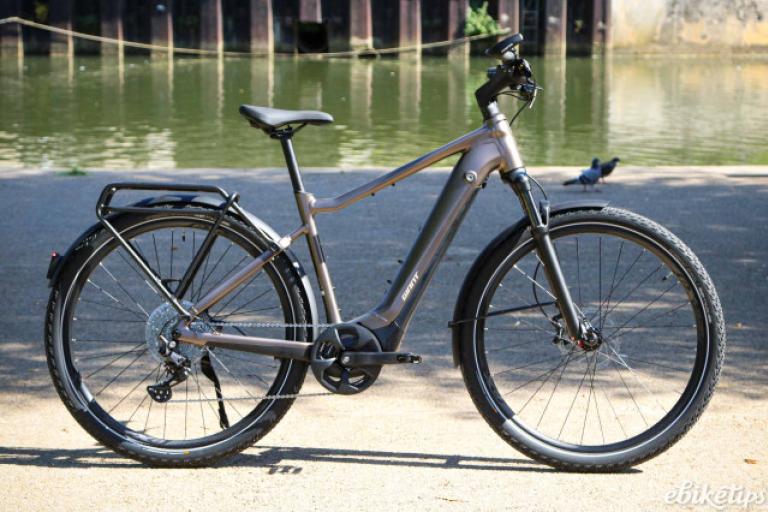
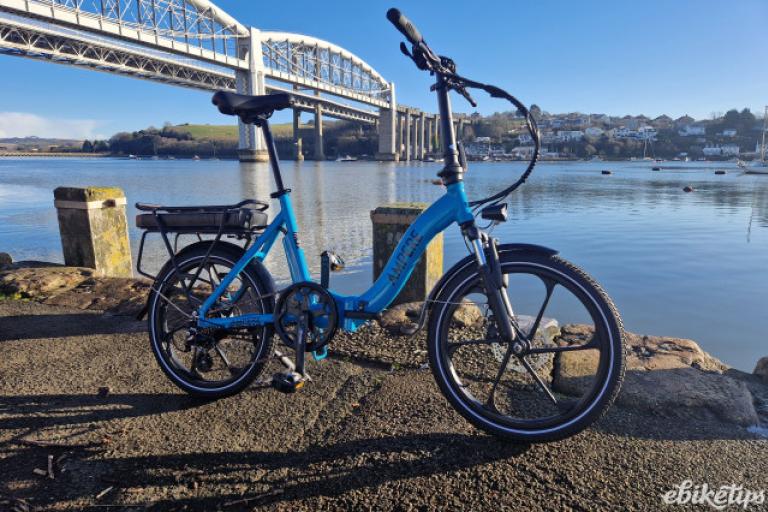
Add new comment
7 comments
When these `sport' ebikes are reviewed you should remember who they're really aimed at. I'm in my 70's with a heart arrhythmia. I have the Cannondale Supersix with the same ebikemotion system. Yes, it gets me up hills I would otherwise struggle with, but I work harder on the flat because of a heavier bike. Fast downhill descending is frightening, mid correction is difficult and there is a tendency to be thrown out wide in a corner, definitely not nimble as a non ebike. A younger person, stronger and fitter rider, I guess like your reviewer will get much more distance from the battery, needing less assistance. The results will not be realistic for the sort of person who it's really aimed for, like me. Someone more than half my age did an ascent on my bike far faster than me, and the battery loss was half of that, than when I did the same route. Perhaps you aught to have someone my sort of age and health test these sort of ebikes. Having a hub motor does allow me to fit shorter cranks, and there is not the drive chain wear that you get from crank motors. However I agree, about having a rear punctures, bit of a nightmare! Replacing the battery is not really a user option.
It's always good to get a wider range of perspectives and consider as many use cases as possible.
That seems to be rather big assumption about 'who they're really aimed at', though. We're well past the point of ebikes being only for those of advancing years, or with physically restricting conditions - ebikes are for everybody now.
Scott's own website features pictures of what appear to be young, fit people riding the bike, and talks about it being not "to make things easier [but] to make things tougher. To make climbs higher, longer, steeper. To get you out of the house earlier, and back home later", so that doesn't exactly seem to be their target market.
https://www.scott-sports.com/gb/en/addict-eride
Looks smart and fast. Price of a Sworks with some extra zip
Im curious if the batteries contained in the down tube are easy to swap out. Imagine owning this bike for 3-5 years and finding out the battery neither holds a decent amount of charge or no longer charges at all and not being able to access the battery inside.
How much!!!!!
No thanks
How much, just out of interest, would you be expecting to pay for a carbon fibre, Dura Ace equipped e-bike?
Actually, at only a grand more than the non-e equivalent, it seems a bargain. But no; I won't be getting one either.